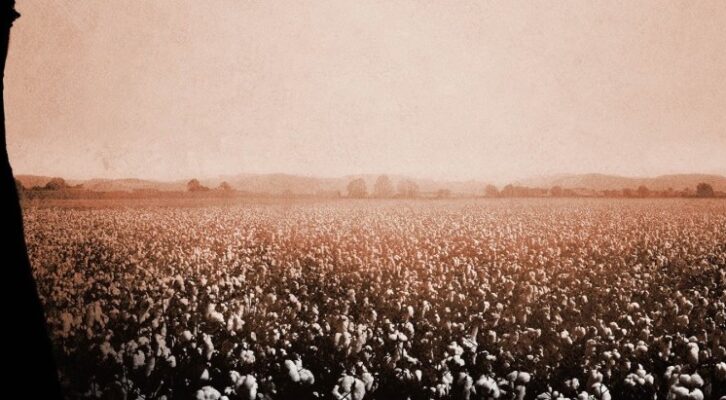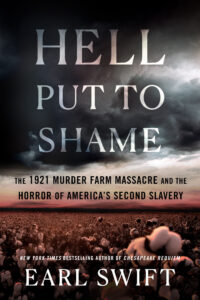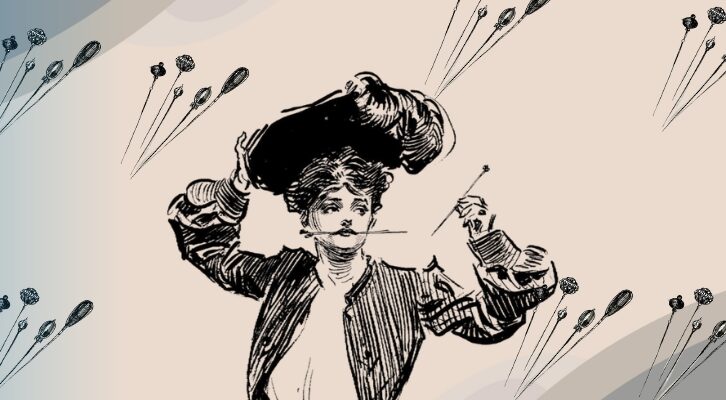
What a Series of Killings in Rural Georgia Revealed About Early 20th-Century America
Earl Swift on the Continuing Regime of Racial Terror in the Post-Civil War American South
They moved Route 36 in the years after the killings. Now the road runs straight where it used to dogleg through Newton County, an hour’s drive southeast of Atlanta, and most travelers don’t see that it was ever otherwise. Orphaned stretches of the old highway linger here and there, most of them dwindled to rough trails—hardwoods and high weeds pressing their flanks, yearling pines braving their unpaved crowns, thick weaves of vine plunging their remote twists into midday dusk.
Leave anything for long in the Georgia heat and rain and, sure as the sunrise, nature will reclaim it. It does not take long.
You have to look hard for one piece of the original roadbed, where it veers from modern blacktop into jungle at the county’s southern tip. Its passage into the trees has knitted shut, season by season, over a lifetime of disuse. A sign once warned off the curious; when it fell away, the opening had shrunk so small, so easily missed by passing traffic, that hanging a new one must have seemed a waste of effort.
The revelations tore at America’s faith in its own virtue. They undermined its sense of modernity, challenged its grasp of history—resurrected sins thought dead and gone.
The road beyond is an abstraction, a shallow groove carpeted in pine needles. But if you dare push through the tangle into the gloom, and follow the ghost of old Route 36 on its curving path among the trees, you soon reach the South River—and what’s left of the span that bore the abandoned highway to the far bank.
Mann’s Bridge squats on rusting pylons a few feet over the drink, its wood-plank floor stripped away, its box-truss skeleton venturing only halfway across the water. Its bones are pitted, flaking, and brittle with age. It receives few visitors, this fossil of horse-drawn days. Barely visible from the modern concrete bridge a thousand feet downstream, it’s paid little mind by anyone.
Yet here, unknown to most folks in Newton County and unmentioned by those aware of it, an event of powerful repercussion occurred. One winter’s Saturday night in 1921, an automobile chugged up the old highway to stop in the span’s middle, and one of its occupants dropped to the water below. Then, as now, the South River was shallow at the bridge, its bottom only eight to ten feet down. But when a man is bound by wire, with a hundred-pound sack of rocks chained to his neck, water need not run deep to do its work. Dark with tannins, clouded by mud, it swallowed him up. A minute later, it was back to running smooth and slow.
On the same night a mile from here, where old Route 36 crossed another river, two different men, likewise trussed with wire and chain, were thrown off Allen’s Bridge, now all but vanished. In the space of a few nights, three more men were pitched off a third bridge five miles to the northeast.
Many others died in the surrounding countryside, all of them Black and all at the hands of what seemed an unlikely killer. His arrest and trial would spawn front-page headlines from coast to coast about the virtual prison he ran on a plantation one county over, and about what lay behind the farm’s prosperity and the murders, both—a form of slavery that had survived in the South for generations after Appomattox.
Each day’s paper brought new details of the slaughter, new glimpses of the brutal months and years the victims endured before meeting their ends. The revelations tore at America’s faith in its own virtue. They undermined its sense of modernity, challenged its grasp of history—resurrected sins thought dead and gone, put to rest by the Thirteenth Amendment. Provoked wonder: How could such things happen here, in the Empire State of the South? How could they happen now, amid the inventive dazzle of the twentieth century? How could they happen at all?
A century on, you might ask the same questions. The whole business remains incredible, the more so because it has so faded from memory. No roadside marker calls it to mind out on the new Route 36. No town square monument honors the dead. Nothing commemorates the drama that brought a pernicious but largely unseen form of indentured servitude to widespread attention—and, by dragging it into the light, perhaps helped to hasten its decline.
Neither do we have tangible reminders that Georgia’s governor at the time, a man vilified for his role in an earlier murder case, earned some measure of redemption through his response to these killings. Nor that, while doing so, he allied with two African American activists who rank among the twentieth century’s ablest generals in the long and continuing battle for racial justice.
About the only memorial to those clamorous days is here, in an out-of-the-way corner of a sparsely populated county in central Georgia, at the end of an abandoned dirt road, at the decrepit remains of Mann’s Bridge.
It seems too tranquil a setting for the lessons it offers. That the past lurks close. That we haven’t learned as much as we think we have. That maybe we never do.
Crickets and birdsong fill the air. Fish leap. The bridge’s old metal bakes hot in the sun.
The river swirls like syrup around its legs.
*
A January weekday at the U.S. Post Office and Courthouse in downtown Atlanta—today the home of the Eleventh Circuit U.S. Court of Appeals, but in 1921, a busy warren of federal offices. Two special agents of the United States Department of Justice’s Bureau of Investigation, the forerunner of today’s FBI, were working at their desks on the third floor when up walked a Black man named Gus Chapman.
Thirty-nine years old and worn for his age, Chapman told the agents that he had been living in Atlanta the previous spring when he was picked up on a loitering charge. Fined five dollars, unable to pay it, he was facing hard labor on the chain gang when a young farmer approached him in the jail. Come home with me, he said, and you can work out your fine there. You’ll be happy you did. It’ll be like a home to you.
And so Chapman accompanied Hulon Williams home to Jasper County, in the cotton country forty miles southeast of the city, and to a sprawling plantation owned by Williams’s father. He quickly saw that “Mr. Hulon” had oversold its charms. Chapman received no pay. He was forced at the end of a gun barrel to work from dawn to well past dark. He was forbidden to leave the premises under threat of death. He was locked up at night in a bunkhouse crowded with other prisoners, and whipped for any infraction, real or imagined. The Bureau agents recognized the conditions he described. Gus Chapman had been held in peonage.
That word has fallen out of use, and today is unknown to many Americans, if not most. But throughout the late nineteenth and early twentieth centuries, peonage claimed lives by the thousands and ruined untold others. It tore men from their wives and children, stole sons from their mothers, and helped fuel the Great Migration of southern Blacks to the industrial cities of the Northeast and Midwest in the years on either side of World War I.
Chapman was typical of its victims. In one of its many forms, a man, usually Black, would be arrested for a trifling or trumped-up offense. Vagrancy—that is, having no job, or at least no ready proof of one—was a favorite, as was loitering. Conviction was pretty much automatic, and almost always carried a fine and fees beyond his means. A third party would then step forward to pay the fine in return for the prisoner’s labor until his debt was repaid. If, before he settled his account, he was prevented from leaving, that prisoner was a peon, trapped in what amounted to debt slavery. Ginned-up bills for his food and housing might be added to his fine, effectively turning a short jail term into a life sentence. His working and living conditions were often hellish. And if he tried to run, he’d be hunted down like an animal.
Chapman knew that firsthand. The previous July, after three months on the farm, he had slipped away by night and struck off to the east. Roughly a dozen straight-line miles across forest and cottonfield, he found himself cornered. The farm’s owner, John Sims Williams—“Mr. Johnny” to his field hands—dragged him home and threatened to kill him. Chapman pleaded for his life until Williams softened. He decided instead to beat the prisoner with his fists, treat him to a savage whipping, then order him to chop firewood in the rain until the sun went down.
Though Congress had outlawed peonage in 1867, it had endured in the hardscrabble back blocks of the rural South.
The memory of that beating, and Mr. Johnny’s assurance that if he ran off again he’d be killed like a snake, dissuaded Chapman from another flight for more than four months—until, on or about December 1, 1920, he again snuck off the Williams place in the dark. This time he made it to Atlanta. He’d been in hiding since.
Others had not been so lucky. Chapman told the agents that he knew of peons killed at the Williams place, and that he had witnessed one of their deaths. A prisoner nicknamed Blackstrap had run away the previous spring and was recaptured after several days on the lam. Back at the plantation, he was draped over a gasoline barrel, his hands and feet held by other field workers, and whipped by Mr. Hulon with such fury that he begged for the torture to stop, begged for the pain to end; cried and begged even as Mr. Hulon handed a revolver to another farmhand and ordered him to shoot.
These Williams people were dangerous, Chapman told the agents. He lived in fear they would track him down in Atlanta. If they found him and took him back to Jasper County, it would be to kill him. It so happened that Gus Chapman was not the only peon to steal away from the Williams plantation and seek out Special Agents Adelbert J. Wismer and George W. Brown. A second man had been bailed out of jail by Mr. Hulon in February 1920 and had been held against his will until his escape the following September. He evaded capture, ghosting into neighboring Newton County and reaching its seat, Covington, before turning west to Atlanta.
The record is vague on whether James Strickland spoke to Wismer and Brown before or after Chapman, but their visits came within weeks of each other, and the accounts they gave the agents dovetailed in their particulars. In exchange for the $5.25 fine that Mr. Hulon paid the jailers, Strickland worked from daybreak to night, without pay and under guard; Mr. Johnny, Mr. Hulon, and Hulon’s brothers, LeRoy and Marvin, carried pistols, as did two trusted Black hands who served as the plantation’s field bosses. Strickland was locked up at night with other men “bought” from the jails in Atlanta, Macon, and Monticello, the Jasper County seat.
Like Chapman, he described seeing a fellow peon murdered. Strickland had not been on the farm long when a worker named Iron Jaw—who also went by Long John, and whom still others knew as Smart John—took off running. The Williamses hunted him down, brought him back, and whipped him. Three of the Williams boys took turns getting their licks in. On a Saturday morning not long after, the peons were building a hog enclosure, and Iron Jaw was dispatched to retrieve a coil of wire for the fence. He was unable to carry it, or was making a mess of rolling the wire—the exact nature of his offense wasn’t clear, but whatever the case, Mr. LeRoy decided he had earned another whipping. LeRoy was well into giving it to him when Iron Jaw asked him to stop. When Mr. LeRoy did not, Iron Jaw told him he would rather die than be treated so.
Mr. LeRoy asked him: You want me to kill you, sure enough?
Yes, came the reply.
Mr. LeRoy shot him in the arm, then asked: You really want me to kill you?
Iron Jaw nodded. Mr. LeRoy shot him dead.
He turned to Strickland, standing a few feet away, and asked: Do you want some of this? The gun, he meant.
No, Strickland recalled saying. I don’t want none of it.
Wismer and Brown took it all down. Though Congress had outlawed peonage in 1867, it had endured in the hardscrabble back blocks of the rural South, and it was among the agents’ duties to investigate reports of its presence. It wasn’t the sort of work they savored. Victims were often too terrorized to say much, white juries tended to side with white defendants, and even if the government won a conviction, the penalties faced by the accused were meager. Still, the Bureau had other business in that part of the state, so on February 18, 1921, the agents drove to Jasper County.
From their office they wove through a booming city of electric lights and elevators, grand movie and vaudeville houses, and office towers reaching higher than songbirds flew. They drove boulevards clogged with Model Ts, streetcars, and slow-rolling drays, past smoking factories and the tenements of the poor. Atlanta, the capital of the New South: a city of smarts and bustle and cosmopolitan style to match most any in the East.
Out through its suburbs of fine homes they passed. Soon the houses fell away, and the cotton rose, and they were in the country.
It was another Georgia out there. It was another century.
__________________________________

Excerpted from Hell Put to Shame: The 1921 Murder Farm Massacre and the Horror of America’s Second Slavery by Earl Swift. Copyright © 2024 by Earl Swift. From Mariner Books, an imprint of HarperCollins Publishers. Reprinted by permission.
Earl Swift
Earl Swift is the author of the New York Times bestseller Chesapeake Requiem, which was named to ten best-of-the-year lists. His other books include Across the Airless Wilds, Auto Biography, The Big Roads, and Where They Lay. A former reporter for the Virginian-Pilot and a contributor to Outside and other publications, he is a fellow of Virginia Humanities at the University of Virginia. He lives in the Blue Ridge mountains west of Charlottesville.



















